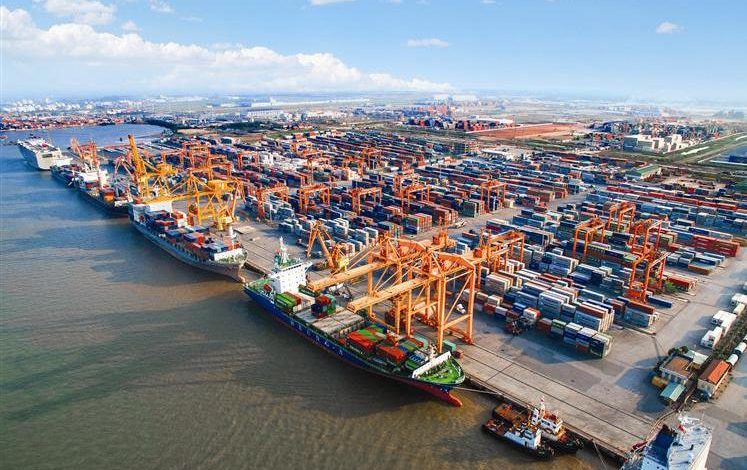Future sourcing, and the impact on liner shipping

Re-shoring of industries post-coronavirus is a hot topic at the moment. Andy Lane from Singapore’s CTI Consultancy crunches the numbers to assess what impact this shift could have on container movements.
Stamford, Connecticut-based Gartner Inc ran a “Weathering the Supply Chain Storm” global survey during February and March 2020, soliciting feedback from 260 participants who are responsible for supply chains and related functions, covering a range of different industries. One of the key findings from this survey was that 33% of respondents said that they had either already relocated manufacturing activities out from China, or planned to do so within the next two to three years.
Those surveyed were not necessarily the extremely high-volume shippers, and those that implied a shift out, might not have meant in totality.
This is maybe not a brand-new trend, there have been several anecdotal reports over the past few years of Chinese manufacturers outsourcing some aspects of their production, mainly to north Vietnam. Manufacturing in coastal China is significantly more expensive than it was a decade or two ago, and with additional logistics challenges and costs associated with manufacturing in the deeper west of the country, that is not always a good option.
A 30% shift results in an overall 12% decline
The already two-year old trade spats, resulting in higher trade tariffs, will have had shippers considering alternatives, or at least partial alternatives. And then came the disruption to Chinese manufacturing as a result of Covid-19, were some critical supplies became harder to come by, causing further sourcing strategy thoughts. Supply chain diversification is now a widely mooted topic.
Remaining as the ‘world’s factory’ is not necessarily a strategy or an ambition of the Chinese government. But any reduction in this activity could only be gradual, as the sheer scale of Chinese manufacturing could simply not be accommodated even by a bunch of other large countries.
If whatever is relocated ends up in other Asian countries, then that would be a zero-sum game for liner shipping. But another trending phrase has been “more regional supply chains”, and that would have an impact for sure. The CEO’s of CMA CGM and Hapag-Lloyd have recently mentioned and acknowledged that this could become a developing trend.
On one hand, a shift from inter-continental to regional supply chains would be a positive from an environmental perspective, so long as the majority of trade continues to move on water. Reducing lead time from order-to-shelf can also be seen to be attractive for a number of commodities, not least fashion or perishables, and this also assists to reduce inventory. Although clearly the costs of manufacture plus inventory remain below the highly economical cost of inter-continental transportation, otherwise the shift would have happened already.
To attempt to determine the potential impact of a shift from inter-continental to regional sourcing, one needs to have a holistic overview of current trade patterns – and this is where the challenge starts. There are many sources of such information, and some congruity between them, but there are also differences. Container Trade Statistics (CTS) does have some good and deep data, but this is maybe less comprehensive when it comes to intra-regional trade. Seabury/DHL recently published a report showing that Intra-Asia was by far the largest trade-lane at some 33.3 m teu per year. We can also call on Sea-Intelligence’s highly comprehensive Trade Capacity Outlook product as another good source.
Pulling all of these together, we can create a picture of the as-is teu*nautical miles of containerised transportation demand. If we take 10% of the current Asia-Europe and transpacific demand and place that into their own regional markets (Eastern Europe and predominantly Mexico respectively), the overall demand for global teu*nautical miles transportation reduces by almost 4%. A 30% shift results in an overall 12% decline.
These are not necessarily huge numbers, but they come at a time when the idle fleet still registers 2m teu (~8%), so it would be another straw on the donkey’s back, and a prolongation of getting back to a better (pre-2008) balance between supply and demand.
Another issue here also is the quantity of jumbo-sized ships in the water or on order. These are particularly effective on longer haul routes, but inefficient on shorter (regional) ones. This is evidenced by the fact that the largest ships on the largest tradelane are generally below 5,000 teu capacity.
In the eye of the storm, there can be several remedies touted for the future, but the memory is short and in better times we can forget what we thought we had learned, so there is certainly no guarantee that there will actually be a shift towards regional sourcing. Diversifying the supply chain to make it more resilient looks attractive, but this will increase costs overall, and therefore is an insurance premium. Maybe that insurance policy will never be bought.
